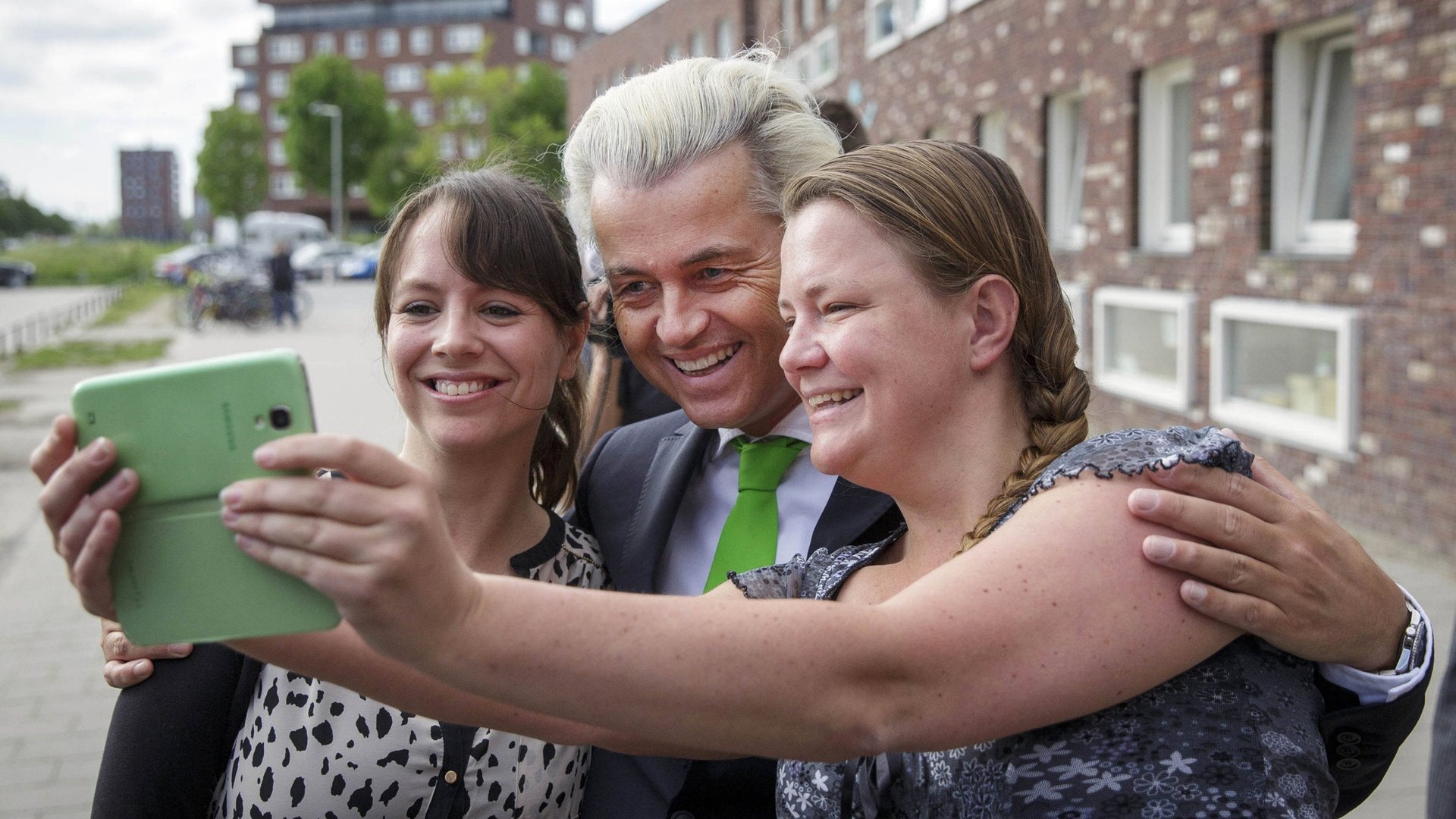The Dutch are perfecting the controversial art of the voting-booth selfie
The Dutch are known for their candor. This openness even extends to the ostensibly secret act of voting in national elections. Tweeting selfies while voting became something of a phenomenon during municipal elections in March. When subsequently asked to clarify the law on taking photos in the voting booth, Dutch courts gave it their blessing (link in Dutch), as long as the photo is of your own ballot and not somebody else’s.


The Dutch are known for their candor. This openness even extends to the ostensibly secret act of voting in national elections. Tweeting selfies while voting became something of a phenomenon during municipal elections in March. When subsequently asked to clarify the law on taking photos in the voting booth, Dutch courts gave it their blessing (link in Dutch), as long as the photo is of your own ballot and not somebody else’s.
Today, Dutch voters went to the polls for the European Parliament, and a flood of selfies burst forth. (For many more “stemfies”—a mashup of selfie and the Dutch stemmen (to vote)—follow the #stemfie hashtag.)
The UK is also voting in European elections today, but you won’t see many tweets of Brits beaming with their ballots. The country’s election authority warned that voting-booth selfies could endanger the secrecy of the vote, and staff have put up warnings against taking photos inside polling stations. The penalty for revealing someone else’s ballot is a £5,000 ($8,430) fine or six months in prison.
The warning had clearly gotten through in London’s Shoreditch neighborhood, one of more technically savvy—and self-absorbed—places in the country. When I voted there today, staff at the booths said nobody had yet tried to snap a selfie. Today’s election-themed selfies from Britain have mostly featured voters outside of polling stations.
The rules on voting-booth selfies elsewhere in Europe are patchy. Belgium has explicitly banned it, threatening a €3,000 ($4,100) fine for offenders. When the rest of Europe votes in the coming days, officials will be forced to take a position on the practice, as voters doing their civic duty face the temptation of public self-documentation. (Elsewhere in the world, South Africa, the Philippines, and some US states have come out against voter selfies.)
Most countries have provisions protecting voters’ right to cast their votes in secret, but people are generally free to voluntarily reveal who they voted for afterwards. The ability to share one’s choices far and wide via the internet gives people a much bigger audience, however, which some fear could influence votes. Allowing photography inside voting booths also raises the possibility of coercion, critics contend, as voters could be forced to provide proof of their choices under duress. But others, including some Dutch officials, say that allowing voter selfies might encourage more people to engage in the democratic process via positive peer pressure.
And the Dutch don’t stop at allowing citizens to live-tweet their votes. Against the wishes of the European Commission, the country will reveal the results of national exit polls after voting ends at 9pm local time tonight. In fact, poll workers are allowed to reveal the count of a station’s vote when asked, so details on turnout have been published throughout the day (links in Dutch). As EUobserver explains:
The European Commission had expressed concern over the attempts to uncover the Dutch results before other member states have had a chance to vote.
But Interior Minister Ronald Plasterk has defended the operations. “The Electoral Law has no clause to forbid the writing down or filming and then disseminating of what the [polling station] president announces.”
For its part, the UK is holding off on releasing any official tallies of turnout or interim results until this Sunday (May 25), when most other EU countries cast their votes for the pan-European parliament. It is fitting that a lack of common rules on exit polls and selfies has become a hot topic during this election, given that it is the European Parliament’s job to develop harmonized laws that apply across the EU.